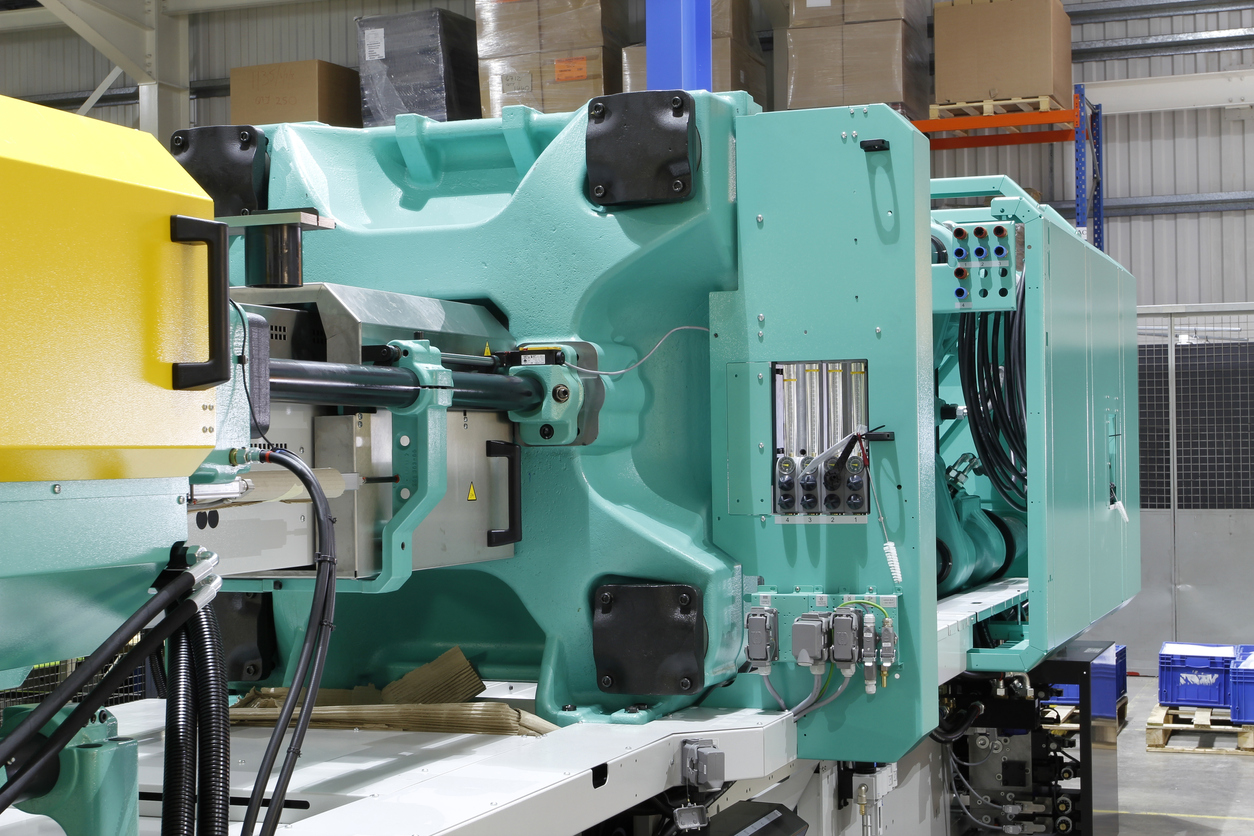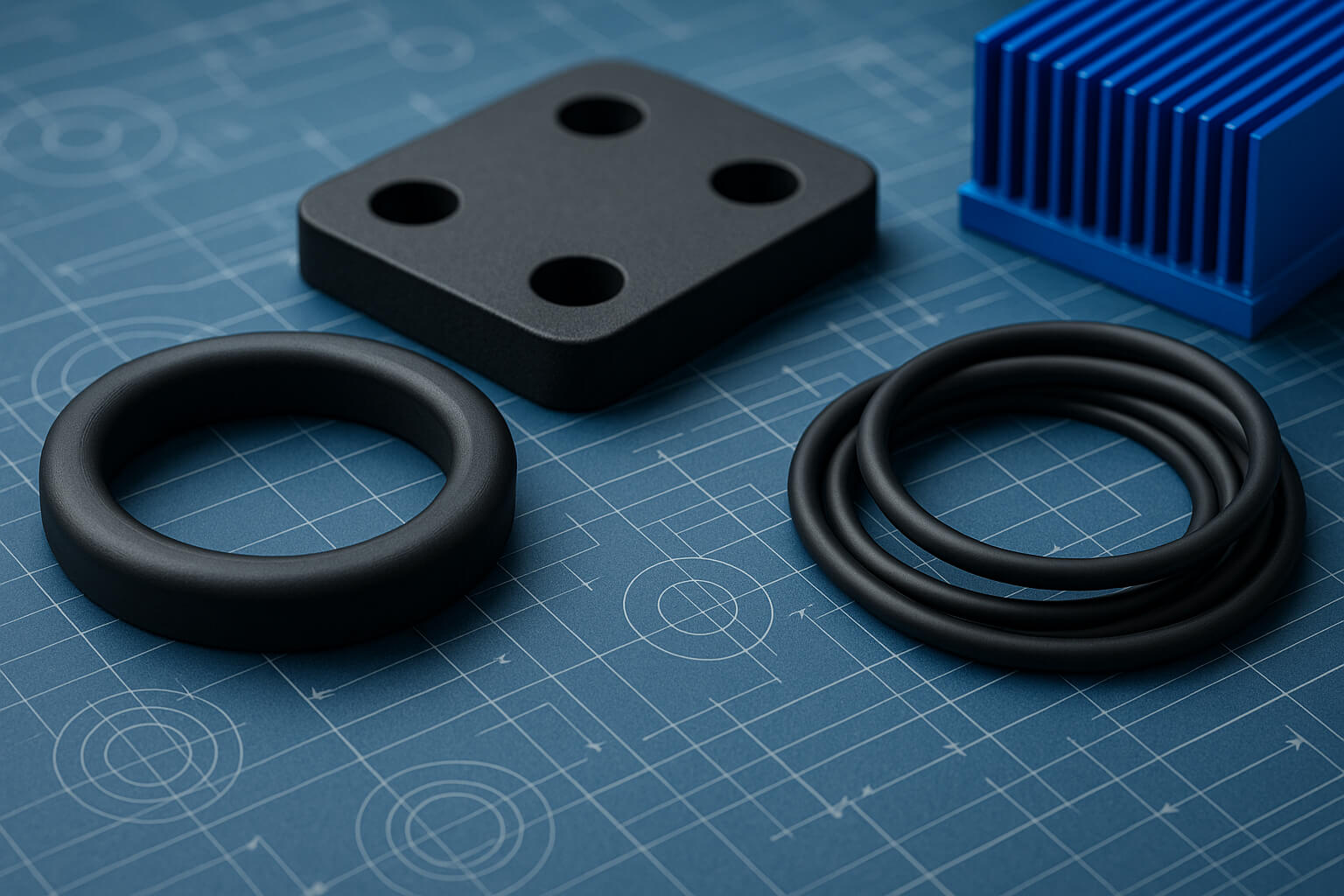
Today’s advanced molding techniques are reshaping the manufacturing process. Injection and compression molding methods transform silicone, rubber, plastics, and PVC into essential parts across a broad spectrum of industries, including:
- Sleek turbine blades for aerospace equipment
- Durable engine components for the automotive sector
- Sturdy yet flexible construction materials
- Detailed panels in avionics
- Streamlined battery casings for electric vehicles
- Medical device housings and other healthcare products
- Robust infrastructure for servers and data centers
And the list goes on. We will explain injection and compression molding and how custom molding services from Sur-Seal can help your business combine ingenuity and technology to meet modern demands. We create high-quality, innovative finished products for companies throughout the United States.
What Is Injection Molding?
A process dating back to the 1800s, injection molding, aka plastic injection molding, involves injecting raw plastic, typically pellets, into a mold cavity. The pellets are heated, liquified, and converted into components and parts in the desired shape.
Advantages of injection molding include:
- High efficiency: Large volumes of parts can be produced with consistent quality.
- Complex parts design: It’s possible to create detailed, intricate parts with varying geometrics.
- Material versatility: While plastic is the most frequently used, other injection molding materials include nylon, polycarbonate, acrylic poly, and thermoplastic rubber.
Disadvantages to injection molding can be:
- High initial cost: The process requires significant investment in custom tooling for each injection molded part. However, the molds can be used repeatedly, saving on tooling costs down the line.
- Long initial lead times: Unlike 3D printed parts, which have a lead time of three to five days, or CNC machined components that can be delivered within 10 days, it can take up to nine weeks to manufacture tooling and produce and ship injection molded parts.
- Expensive design changes: If you make an injection molding design change, you’ll likely need to create an entirely new mold. An experienced manufacturing partner can offer design advice and help avoid this scenario.
Industries & Projects That Use Injection Molding
Many industries use injection molding due to its precision and efficiency. The process offers unique benefits for specific projects and products that include:
- Consumer electronics, including smartphone cases, laptop frames, and TV bezels
- Packaging items such as bottle caps and cosmetic containers
- Automotive interior components like dashboard elements, knobs, and other interior features
- Medical devices, including surgical instruments, diagnostic equipment casings, and drug delivery systems
- Home appliances such as kitchen gadgets and washer and dryer components
Compression Molding: A Guide
Developed in the early 1900s to mold Bakelite, compression molding is primarily used for thermosetting plastics and composite materials like phenolic, epoxy, melamine, and diallyl phthalate. The raw material is placed in an open, heated mold cavity. The mold is then closed, and heat and pressure force the material into contact with all areas of the mold, where it cures and takes on the desired shape.
Benefits of compression molding include:
- Cost-effective for large parts: It’s more economical for manufacturing large, fairly simple items.
- Good for high-strength materials: Composites and fiberglass can be molded into solid, long-lasting parts.
- Low waste: Excess material is often reused, reducing waste.
Potential downsides to compression molding are:
- Limited to simpler designs: Compression molding is not a good option if you need parts with intricate details or complex geometrics.
- Slower production rates: Cycle times are longer compared to injection molding.
- Labor intensive: It can require more manual labor for material placement.
Industries & Projects That Use Compression Molding
Industries that need strong, sturdy parts that can withstand demand environments use compression molding to fulfill their projects’ needs.
- Aerospace manufacturing components like bulkheads and wing assemblies
- Construction of bathroom fixtures, paneling, and lighting systems housing
- Military & defense items like strong parts for vehicles, equipment, and shelters
- Electrical creating insulators, electrical enclosures, and circuit breakers
- Sports equipment such as crafting of golf clubs, protective gear, and racquets
Choose Sur-Seal for Your Molding Project
Do you need custom parts manufactured for your business or product? Since 1940, Sur-Seal has approached every injection and compression molding project with a can-do attitude, no matter how complex the job. We also provide durable custom-cut silicone solutions and top-rated die-cut plastic materials that are second to none.
Start your custom project today by contacting Sur-Seal online or calling 513-574-8500.

